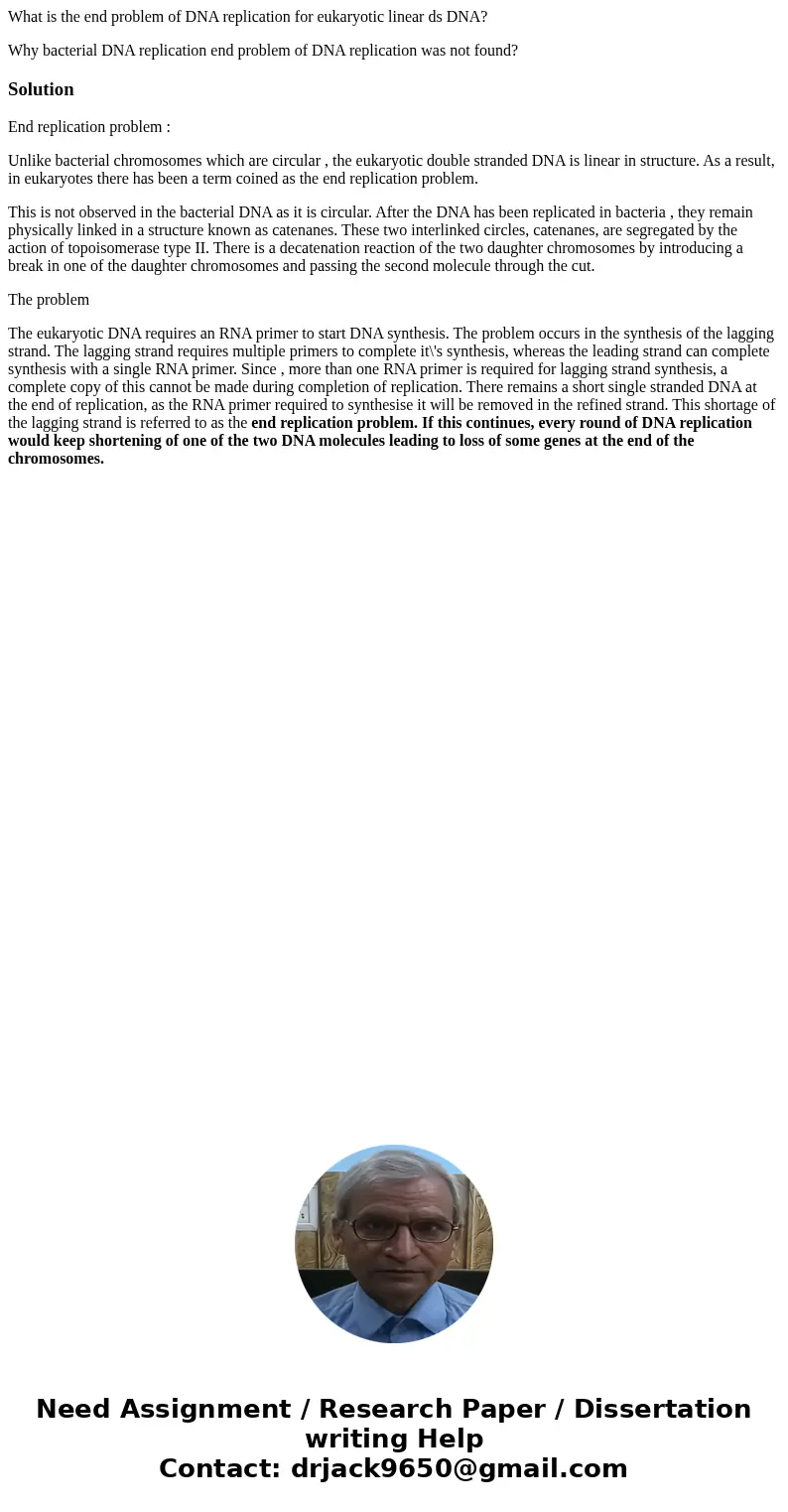What is the end problem of DNA replication for eukaryotic li
What is the end problem of DNA replication for eukaryotic linear ds DNA?
Why bacterial DNA replication end problem of DNA replication was not found?
Solution
End replication problem :
Unlike bacterial chromosomes which are circular , the eukaryotic double stranded DNA is linear in structure. As a result, in eukaryotes there has been a term coined as the end replication problem.
This is not observed in the bacterial DNA as it is circular. After the DNA has been replicated in bacteria , they remain physically linked in a structure known as catenanes. These two interlinked circles, catenanes, are segregated by the action of topoisomerase type II. There is a decatenation reaction of the two daughter chromosomes by introducing a break in one of the daughter chromosomes and passing the second molecule through the cut.
The problem
The eukaryotic DNA requires an RNA primer to start DNA synthesis. The problem occurs in the synthesis of the lagging strand. The lagging strand requires multiple primers to complete it\'s synthesis, whereas the leading strand can complete synthesis with a single RNA primer. Since , more than one RNA primer is required for lagging strand synthesis, a complete copy of this cannot be made during completion of replication. There remains a short single stranded DNA at the end of replication, as the RNA primer required to synthesise it will be removed in the refined strand. This shortage of the lagging strand is referred to as the end replication problem. If this continues, every round of DNA replication would keep shortening of one of the two DNA molecules leading to loss of some genes at the end of the chromosomes.

 Homework Sourse
Homework Sourse